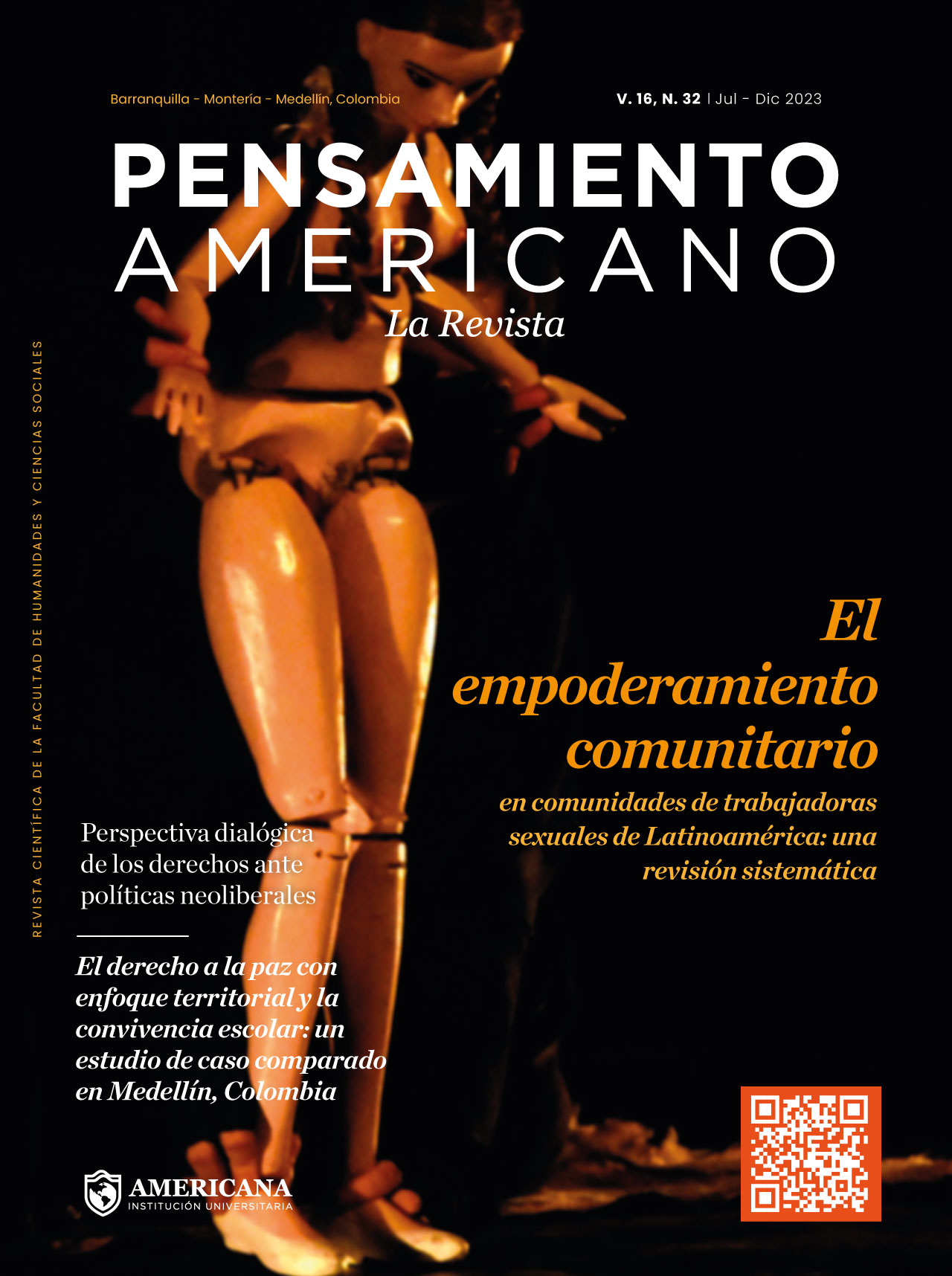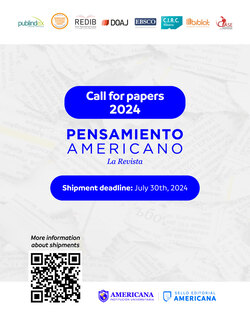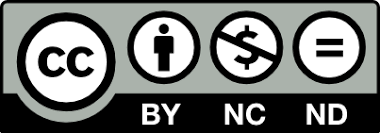Leadership Styles that generate Risk Factors in teaching work: High School Education
DOI:
https://doi.org/10.21803/penamer.16.32.604Keywords:
Teaching, Harassment, Educational environment, Leadership, Educational system, Occupational psychologyAbstract
Introduction: Psychosocial Risk Factors (PRF) in the workplace are a current topic that is visible in any type of organization, and the causes that originate them are diverse. Objective: The purpose of the present study is to demonstrate the correlation between certain leadership styles and the generation of Psychosocial Risk Factors in teaching work at a public high school educational institution located in Guadalupe, Zacatecas, México. Method: The research approach is quantitative, non-experimental, cross-sectional, with a descriptive-correlational scope. For the collection of information, a self-developed instrument with a Cronbach's alpha of 0.865 was used, applied to a random sample of 50 teachers. Results: The findings reveal a statistically significant correlation between permissive and bureaucratic administrative styles and teacher harassment in three of its dimensions: physical, psychological, and economic aggression, the last two being the most recurrent. Conclusion: Leadership styles or administrative styles have a transcendent influence, affecting the physical and psychological health of the recipient.
Downloads
References
Bolívar, A. (2015). Un liderazgo pedagógico en una comunidad que aprende. España: Universidad de Granada. Revista Padres y Maestros, 361, 23-27. https://www.researchgate.net/publication/322298404_Liderazgo_pedagogico
Boniolo, P. (2005). Recomendaciones para la redacción del marco teórico, los objetivos y la propuesta metodológica de proyectos de investigación en ciencias sociales. CLACSO.
Cambel, A.B. (1993) Applied chaos theory -A paradigm for complexity. Academic
Campos, A. y Campos, L. (2014). Optimizando la gestión y administración profesionales. Comunicación y liderazgo laissez faire enfermero. Revista Española de Comunicación en Salud, 6(1), 85-93. http://www.aecs.es/6_1_8.pdf
Cerdas, V., García, J. A., Torres, N., y Fallas, M. A. (2017). Análisis de la gestión administrativa de centros educativos costarricenses: Percepción del colectivo docente y la dirección. Revista Ensayos Pedagógicos, 12(2), 95-122. https://doi.org/10.15359/rep.12-2.5
Contreras, T. (2016). Liderazgo pedagógico, liderazgo docente y su papel en la mejora de la escuela: una aproximación teórica. Revista: Propósitos y Representaciones, 4(2), 231-284. http://dx.doi.org/10.20511/ pyr2016.v4n2.123
Cornejo, A. (1998) Teoría del caos y administración de la complejidad. Thomson
Dessler, G. (2002). Administración de personal. Prentice Hall.
Diario Oficial de la Federación (DOF) (23 de octubre de 2018). Norma Oficial Mexicana NOM-035-STPS-2018, Factores de riesgo psicosocial en el trabajo-Identificación, análisis y prevención. México.
Drucker, F. (2001). The Essential Drucker. Editorial Harper Collins Publishers, Inc.
Flores, H. y Luna, A. (2023). Liderazgo y Gestión en Educación Media Superior Tecnológica: un estudio desde la percepción docente en el estado de Tlaxcala. Gestión de la Educación, 9(1). https://doi.org/10.15517/rge.v9i1.52635
García, J. A., y Cerdas, V. (2019). Estilos de liderazgo de los directivos escolares costarricenses: transformando las organizaciones educativas. Innovaciones educativas, 21(31), 5-21. https://doi.org/10.22458/ie.v21i31.2690
Hernández, R., Fernández, C. y Baptista, M. (2014). Metodología de la investigación (6ª ed.). McGrawHill Educaciòn.
Hoy, W. y Miskel, C. (2008). Educational Administration: theory, research and practice. New York.Mc Graw Hill. https://www.scirp.org/(S(351jmbntvnsjt1aadkposzje))/reference/ReferencesPapers.aspx?ReferenceID=756487
Instituto Nacional de Estadística y Geografía (INEGI, 2010). Censo de Población y Vivienda 2010.https://www.inegi.org.mx/rnm/index.php/catalog/71#:~:text=El%20Instituto%20Nacional%20de%20Estad%C3%ADstica,junio%20de%20ese%20mismo%20a%C3%B1o.
Levy, D. (1994). Chaos Theory and Strategy: Theory, Application and Managerial Implications. Strategic Management Journal, 15.
López, E., García, L. y Martínez, J. (2019). La gestión gerencial como potenciadora del mejoramiento del clima organizacional y la convivencia en las instituciones de educación media superior. REÍR. Revista Iberoamericana de Investigación y Desarrollo Educativo, 9 (18), 792-812. https://doi.org/10.23913/ride.v9i18.471
Martínez, C. J. (2018). Teoría del Caos y Estrategia Empresarial. Tendencias, 19 (1), 204-214. https://doi.org/10.22267/rtend.181901.94
Martínez, E. Tobòn, S. y Romero A. (2017). Problemáticas relacionadas con la acreditación de la calidad de la educación superior en América Latina. Innovación Educativa. https://www.scielo.org.mx/scielo.php?script=sci_arttext&pid=S1665-26732017000100079
Moral, C., Amores, F.J. y Ritacco, M., (2016). Liderazgo distribuido y capacidad de mejora en centros de educación secundaria. Estudios sobre la Educación, 30. https://dadun.unav.edu/handle/10171/40344
Nefa, J. (2015). Los riesgos psicosociales en el trabajo contribución a su estudio. Centro de Estudios e Investigaciones Laborales CEIL-CONICET
Organización Internacional del Trabajo (OIT, 2019). Estrés en el trabajo: Acabemos con esta carga. https://www.ilo.org/safework/events/safeday/lang--es/index.htm
Organización Mundial de la Salud (OMS, 2002). Informe sobre la Salud del mundo. Ginebra. Capítulo 2. Definición y evaluación de los riesgos para la salud https://apps.who.int/iris/handle/10665/42557
Pacsi, A., Estrada, W., Pérez, A. y Cruz, P. (2015). Liderazgo Laissez Faire. Revista Cuaderno Empresarial, 1(1), 9-16. https://bit.ly/2DGr7O7
Patlán, J. (2019). Claroscuros de las NOM-035-STPS-2018 Factores de riesgo psicosocial en el trabajo: Identificación, análisis y prevención. RIST Revista Red de Investigación en Salud en el Trabajo, 2(2). https://rist.zaragoza.unam.mx/index.php/rist/article/view/202
Perrow, C. (1972). Complex Organizations. A Critical Essay. Scott, Foresman.
Rodríguez, G. (2011). Funciones y rasgos del liderazgo pedagógico en los centros de enseñanza. Revista: Educación y Educadores, 14(2), 253-267. https://www.redalyc.org/pdf/834/83421404003.pdf
Salazar, A. (15 de febrero de 2018). Estructuras organizacionales y tipos de organigramas. https://www.gestiopolis.com/estructuras-organizacionales-y-tipos-de-organigramas/
Señoriño, O y Bonino, S. (2017). Institución educativa: las definiciones de la indefinición. Revista Iberoamericana de Educación. https://rieoei.org/historico/deloslectores/332Senoriino.pdf
Thomas, W., Colligan, M., Eileen M. (2008) Workplace Stress. Journal of Workplace Behavioral Health, 21(2), 89-97. https://doi.org/10.1300/J490v21n02_07
Villagrán, S. (2017). Mobbing Docente. Daño físico, económico y psicológico, caso en una Universidad Pública. Revista Iberoamericana de Ciencias, 4(1), 104-11. http://www.reibci.org/publicados/2017/feb/2000110.pdf
Villagrán, S. (2022). Análisis de estructuras organizativas y factores de riesgo psicosociales: NOM-035 –STPS. En Villagrán, S., Vasconcelos, M., y Padilla, R., Factores de riesgo psicosocial (pp.13-25). Editorial LEED del Laboratorio de Evaluación y Educación Digital. https://books.google.com.mx/books/about/Factores_de_riesgo_psicosocial.html?id=RX5ZEAAAQBAJ&source=kp_book_description&redir_esc=
Weber, M. (1977). Economía y sociedad. Esbozo de sociología comprensiva. Fondo de Cultura Económica.
Yang, I. (2015). Positive effects of laissez-faire leadership: Conceptual exploration. The Journal of Management Development, 34(10), 1246-1261. https://doi.org/10.1108/ JMD-02-2015-0016
Zuzama, J. (2015). Liderazgo: estilos de liderazgo según Kurt Lewin y análisis de un caso real. Mallorca. Universitat de les Illes Balears.
Downloads
Published
Versions
- 2023-03-16 (3)
- 2024-03-15 (1)
Issue
Section
License
Copyright (c) 2023 Pensamiento Americano

This work is licensed under a Creative Commons Attribution-NonCommercial-NoDerivatives 4.0 International License.
The author or authors of an article accepted for publication in the Journal Pensamiento Americano will transfer all of the patrimonial rights to the American University Corporation free of charge, within which are included: the right to edit, publish, reproduce and distribute both print media as digital, in addition to include in article in international indexes and / or databases, likewise, the Editorial Seal is authorized to use the images, tables and / or any graphic material presented in the article for the design of covers or posters from the same magazine. By assuming the patrimonial rights of the article, it may not be partially or totally reproduced in any printed or digital media without its express permission.
AUTHORITY ASPECTS
For the Pensamiento Americano Journal, all the authors of an article have made substantial contributions to the research and the manuscript, and they share the responsibility when the article presents errors, fraud in some way or violations of copyright.
After submitting an article, the journal does not accept the addition, deletion or change in the order of the authors, in addition we reserve the right to release the article when it has been submitted to the journal and under no circumstances will American Thought accept the article. withdrawal of an article during any phase of the editorial process






